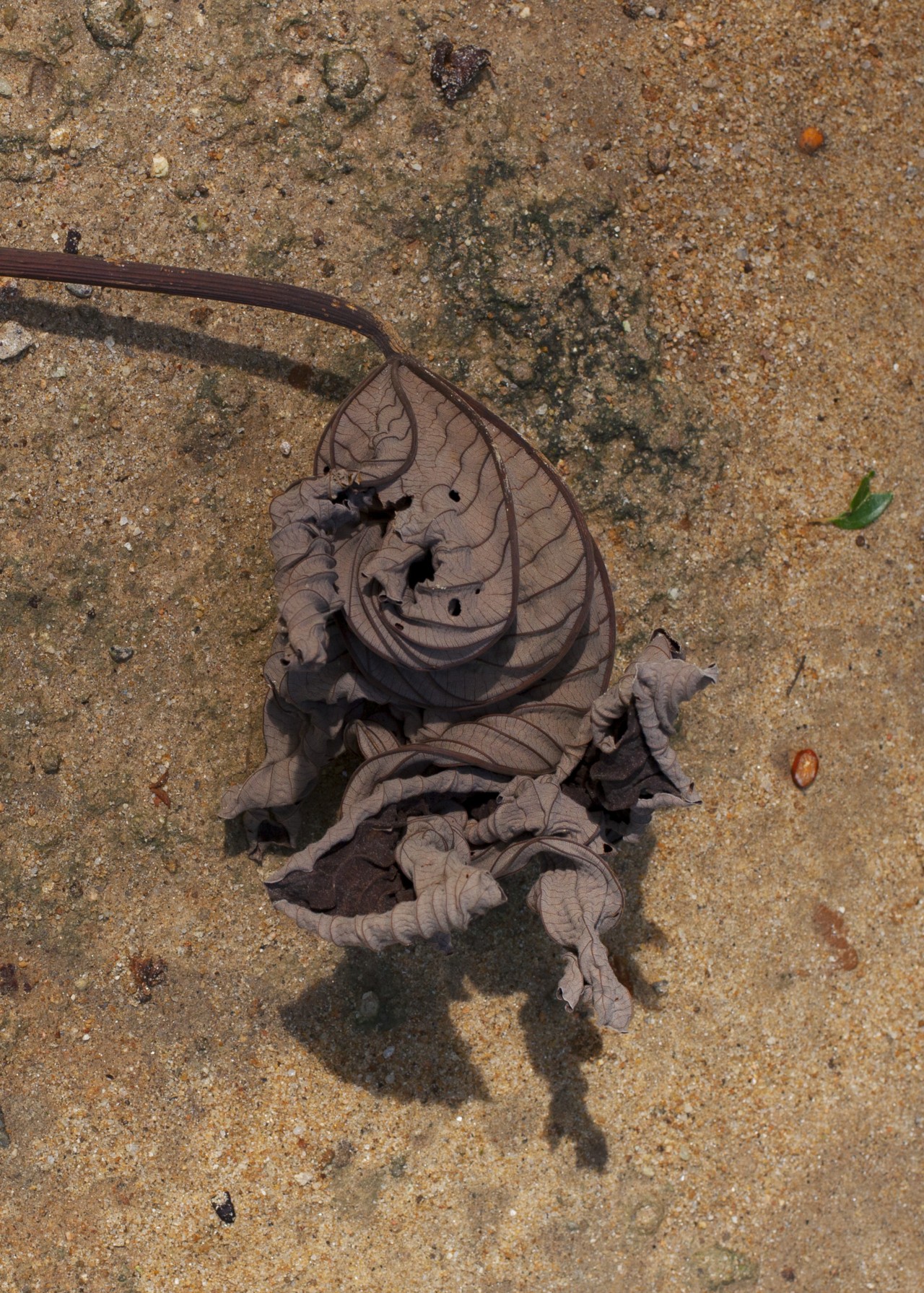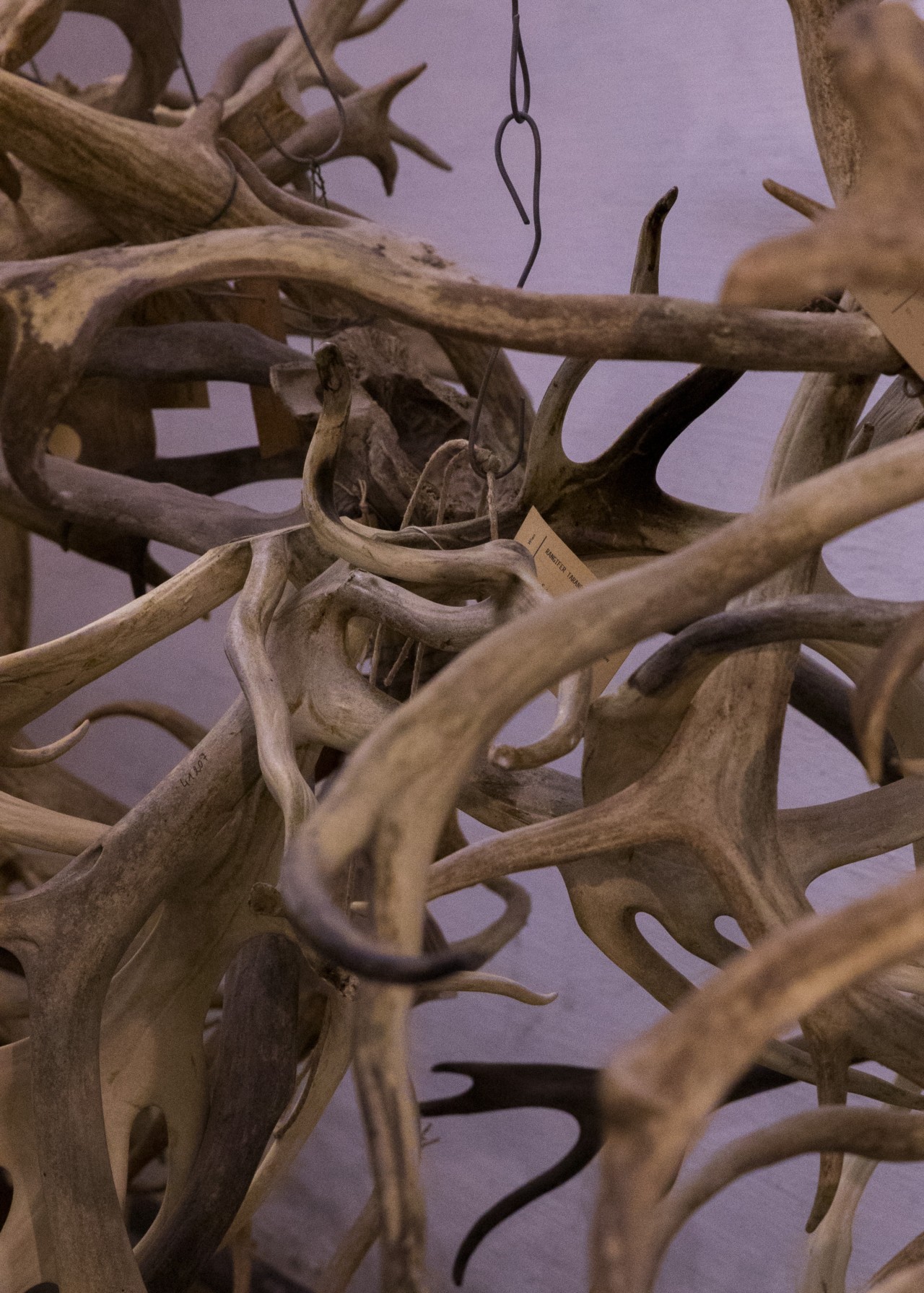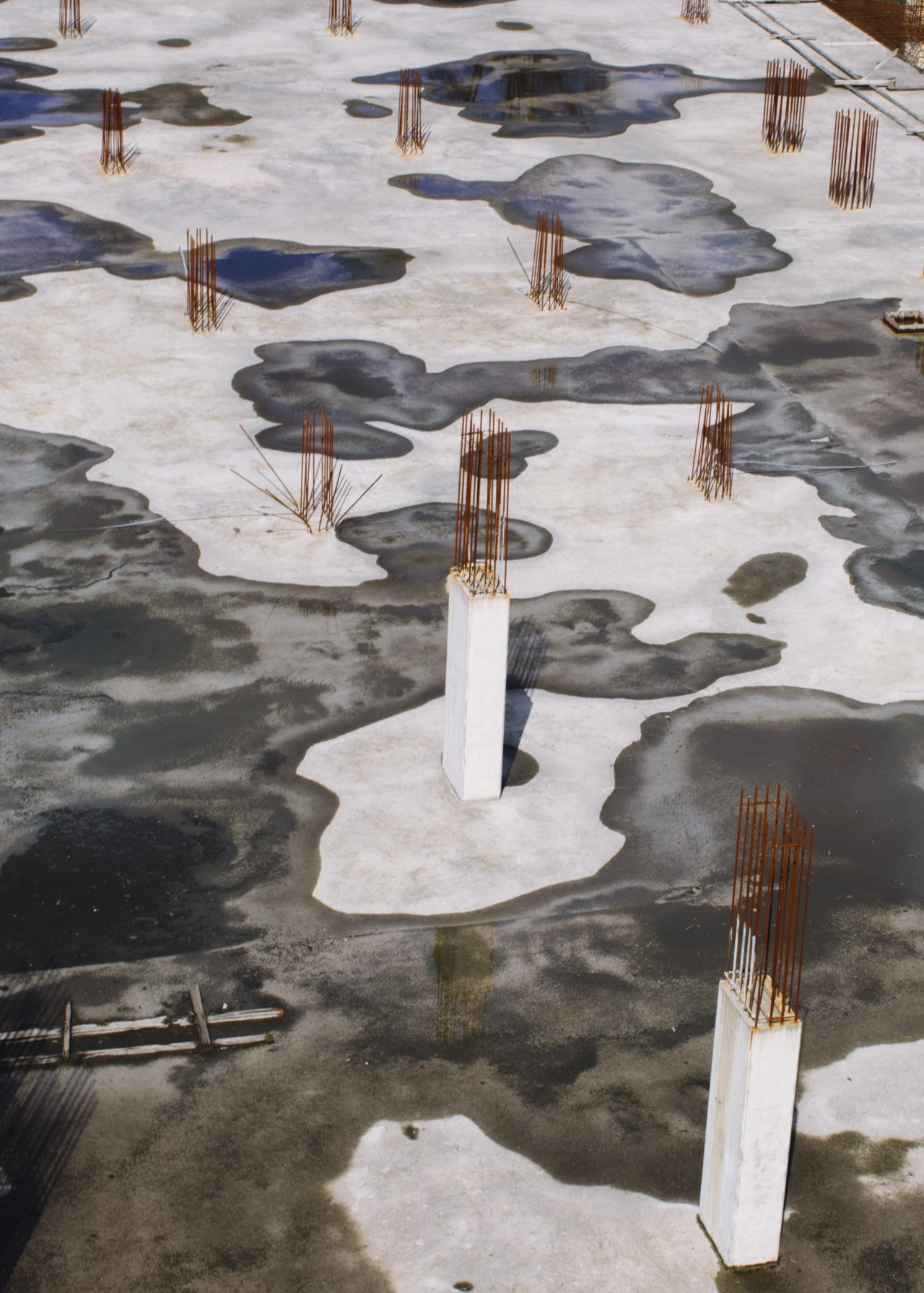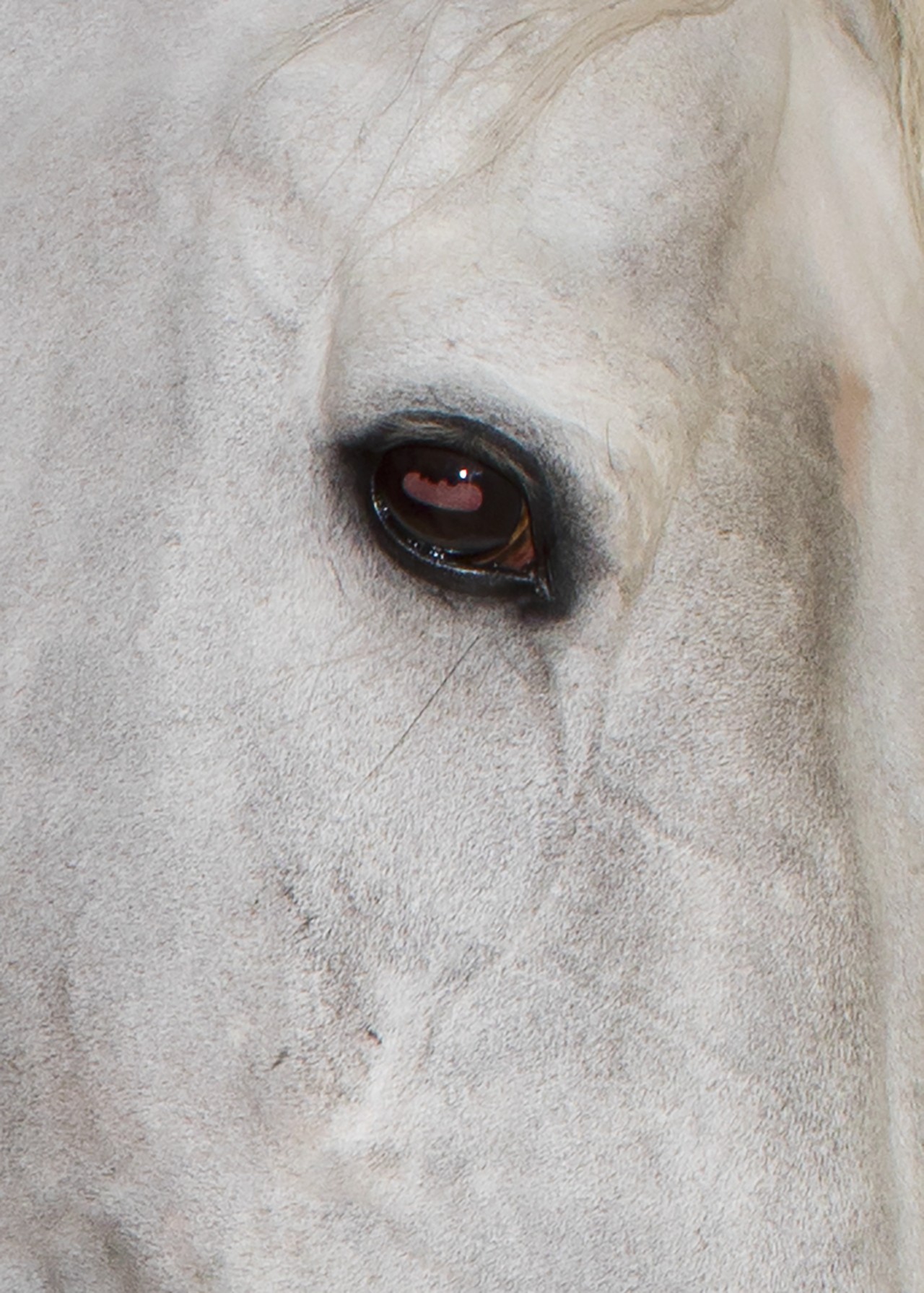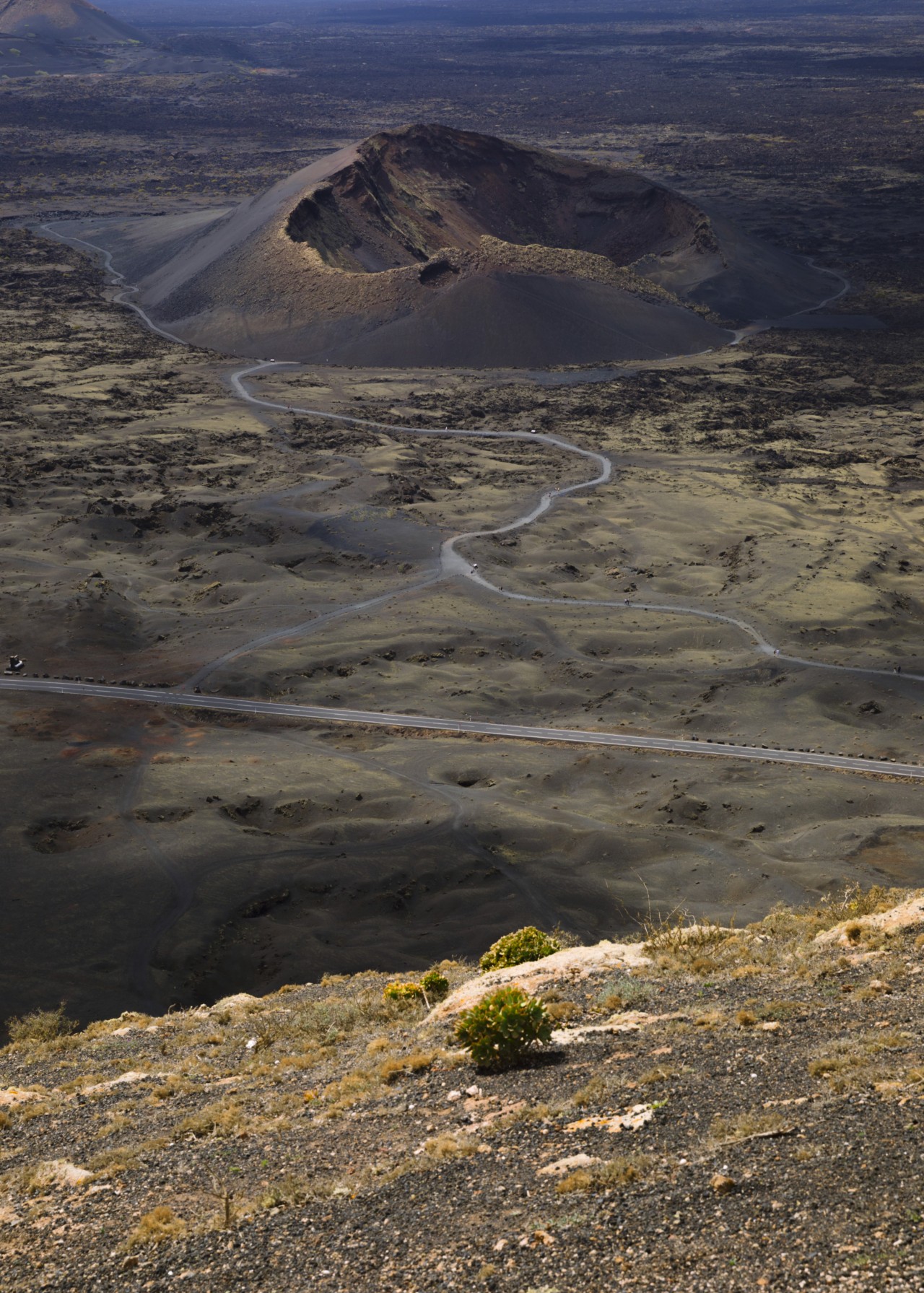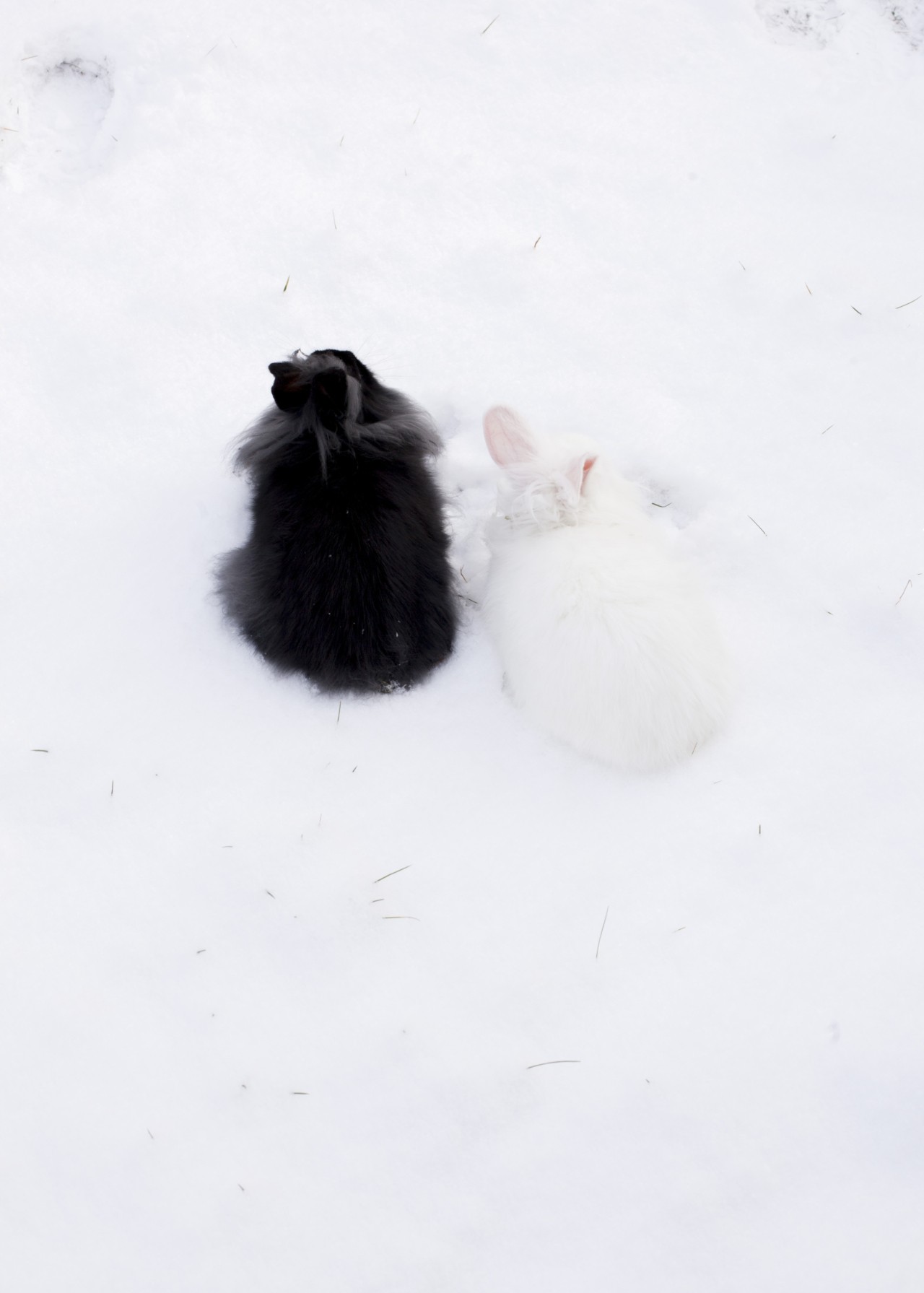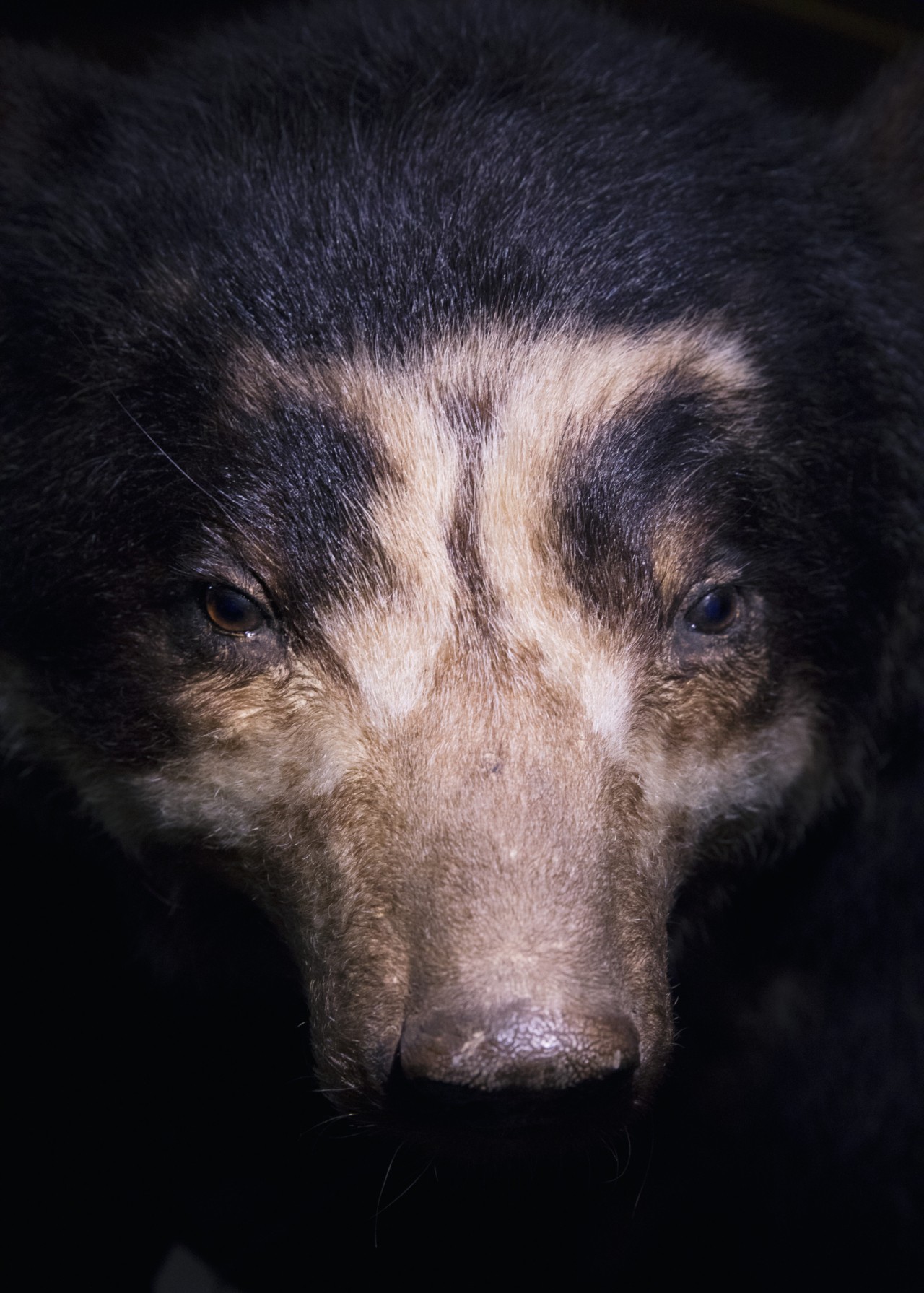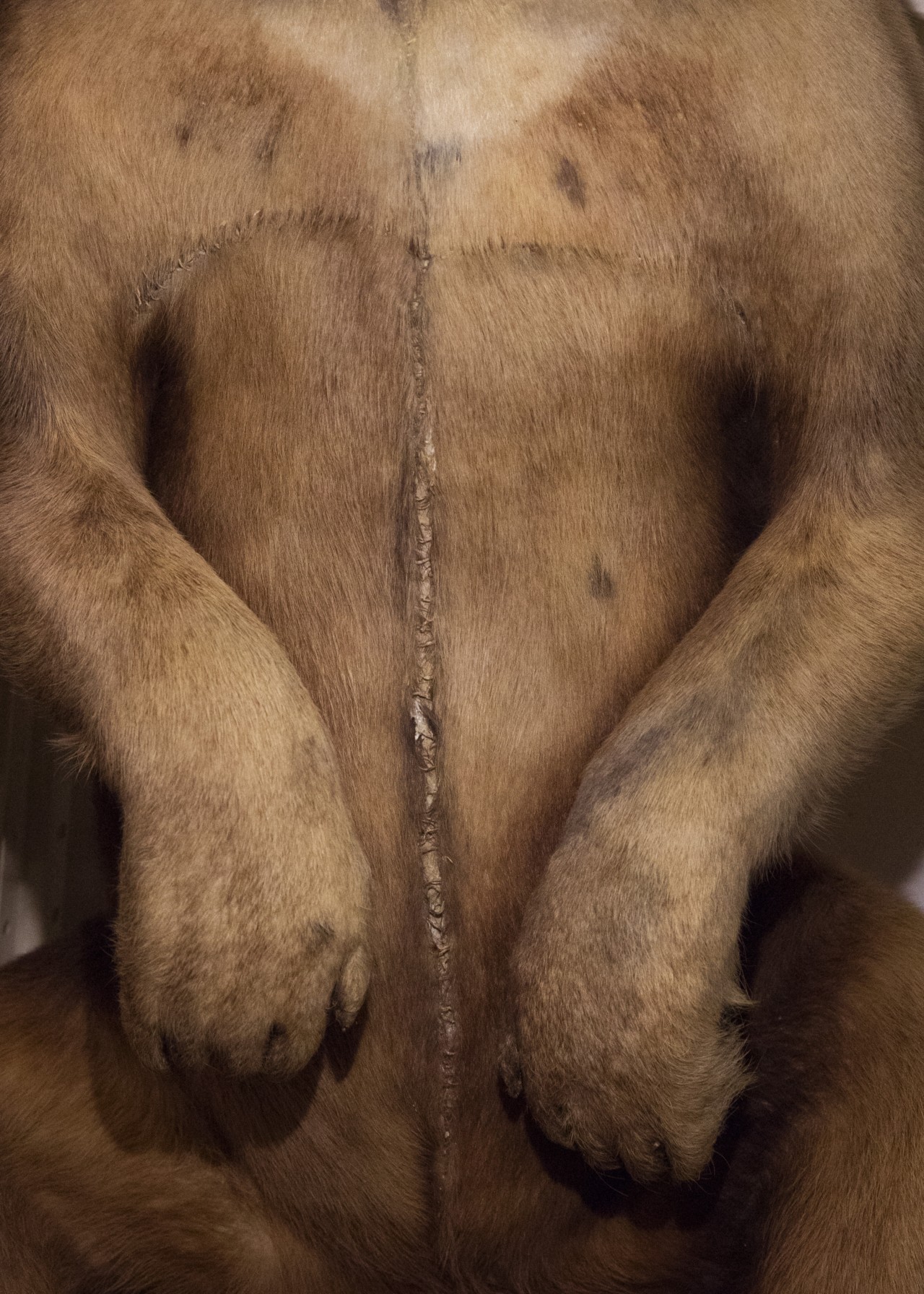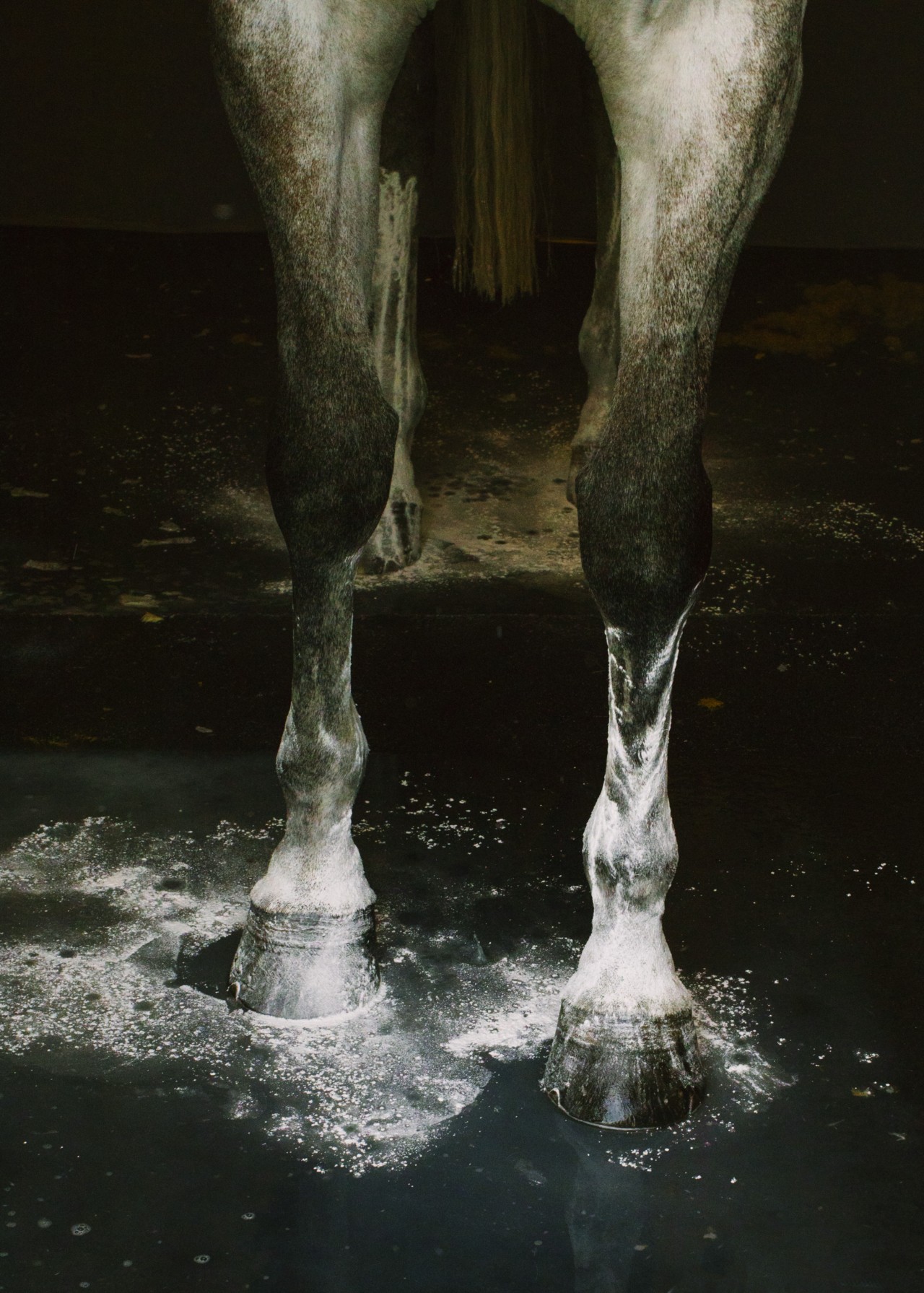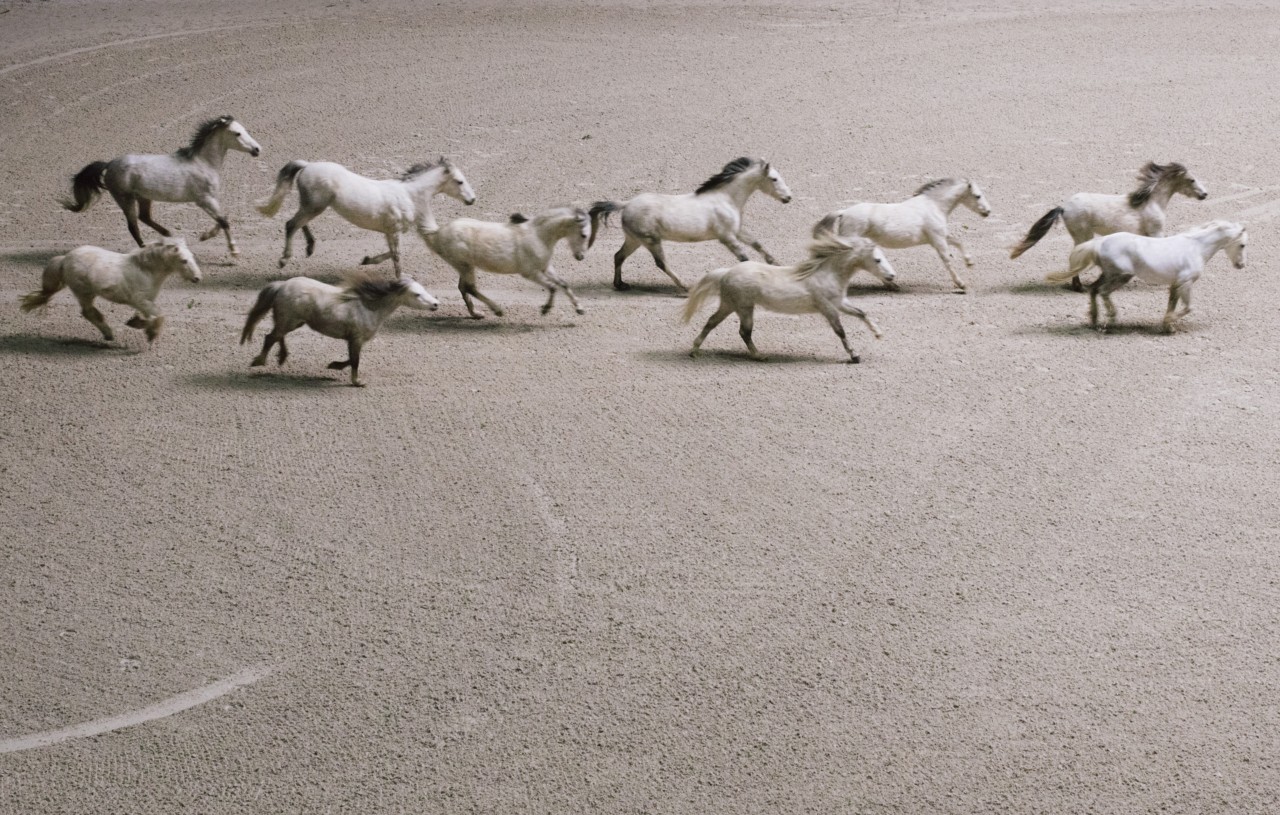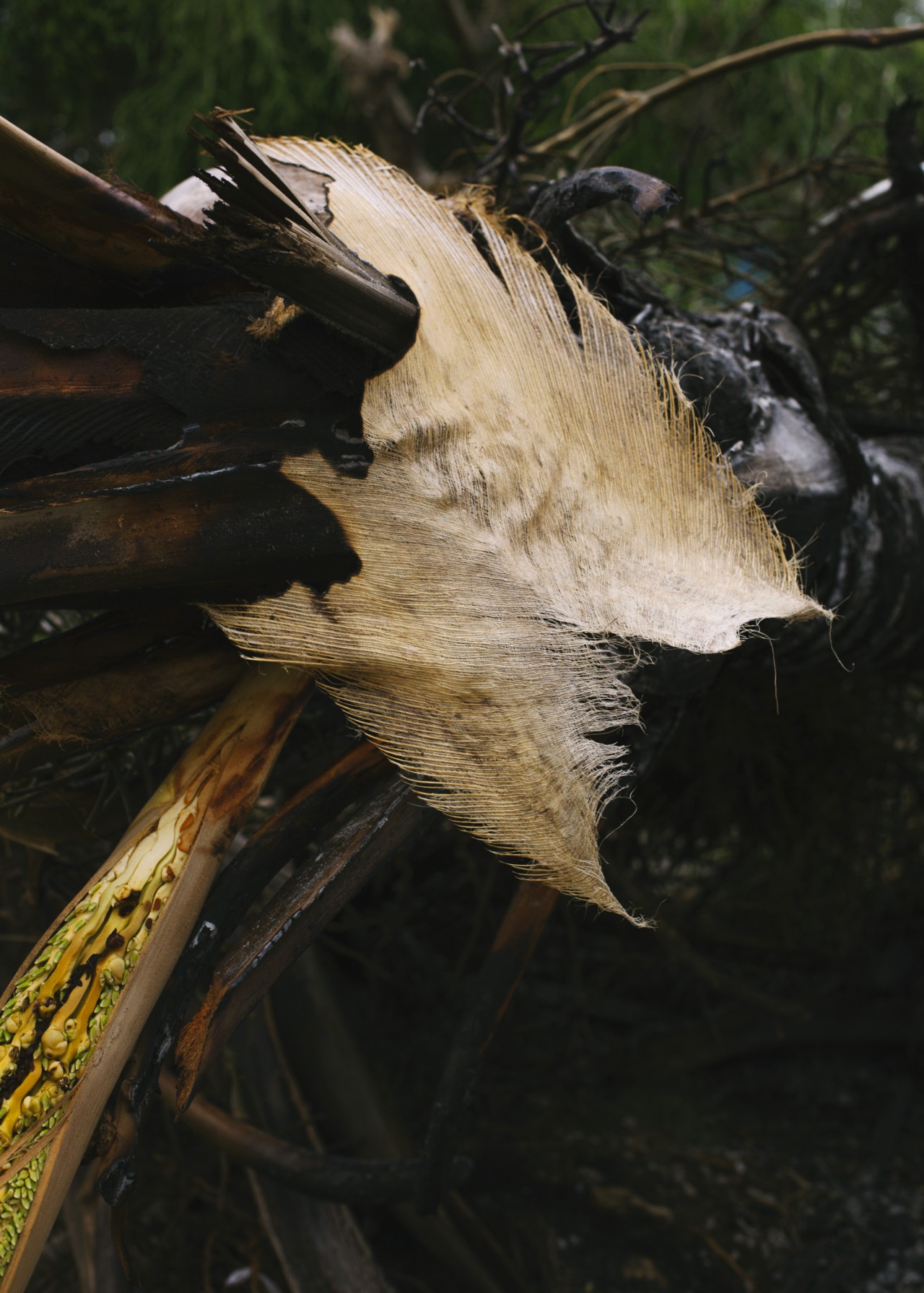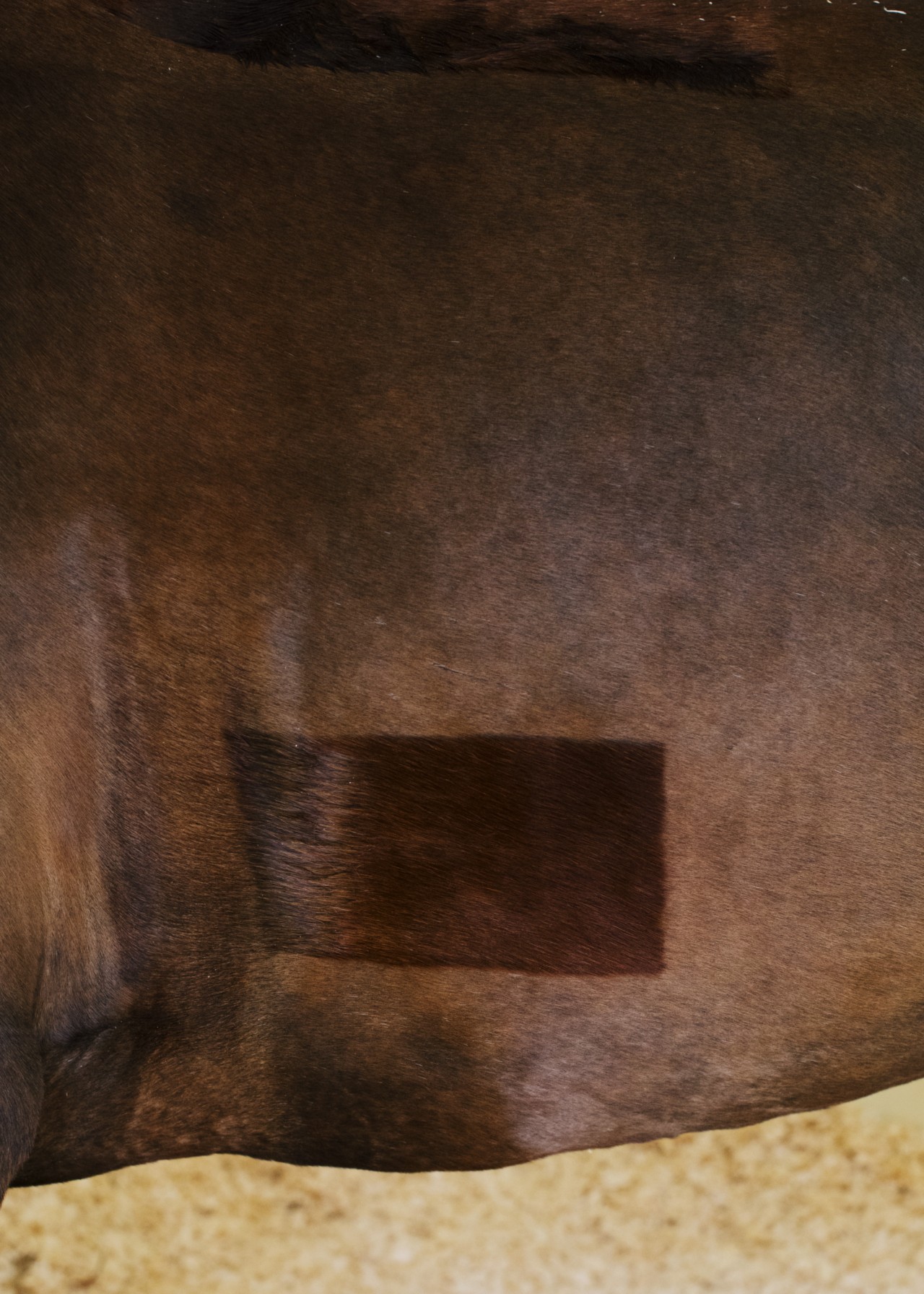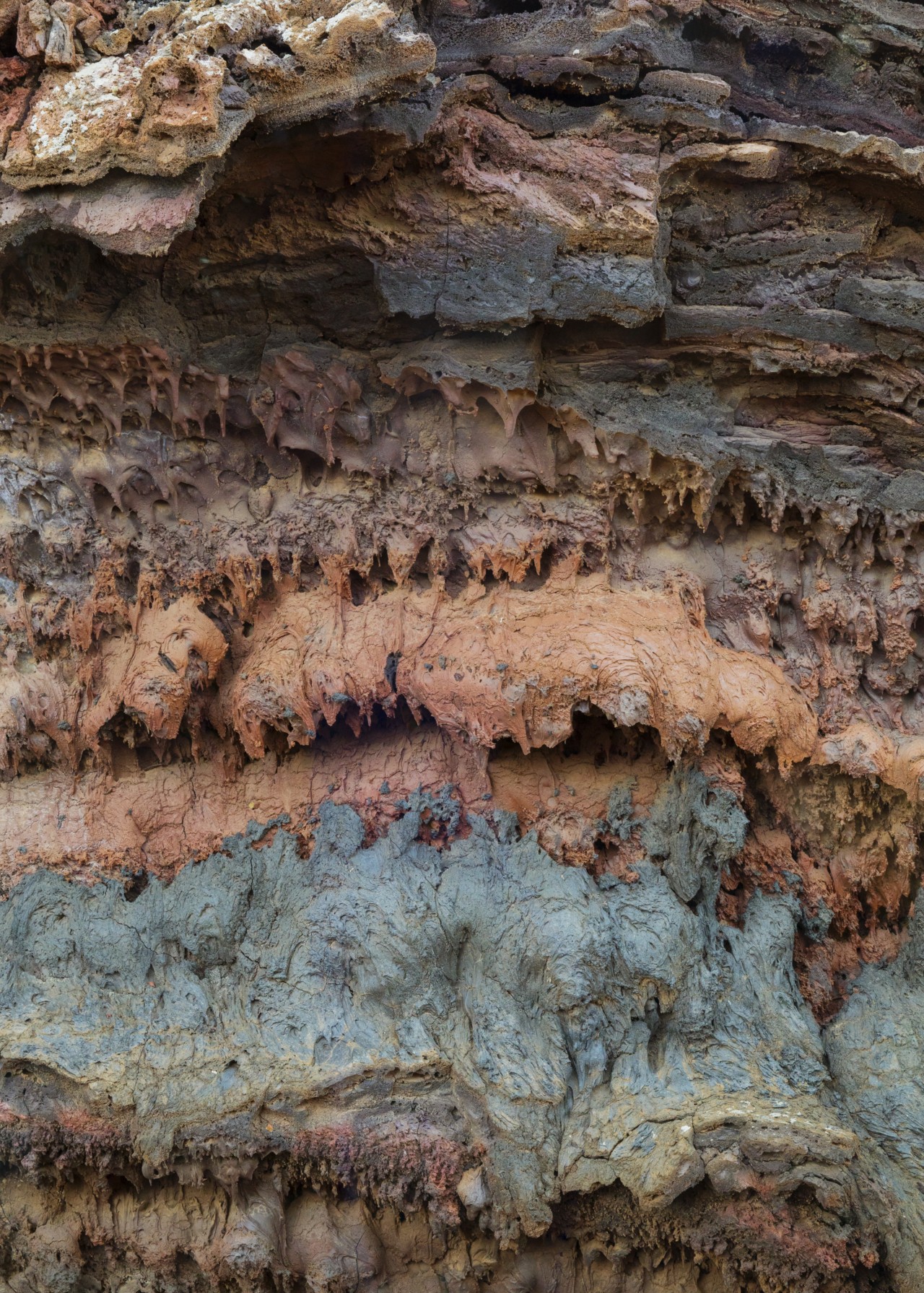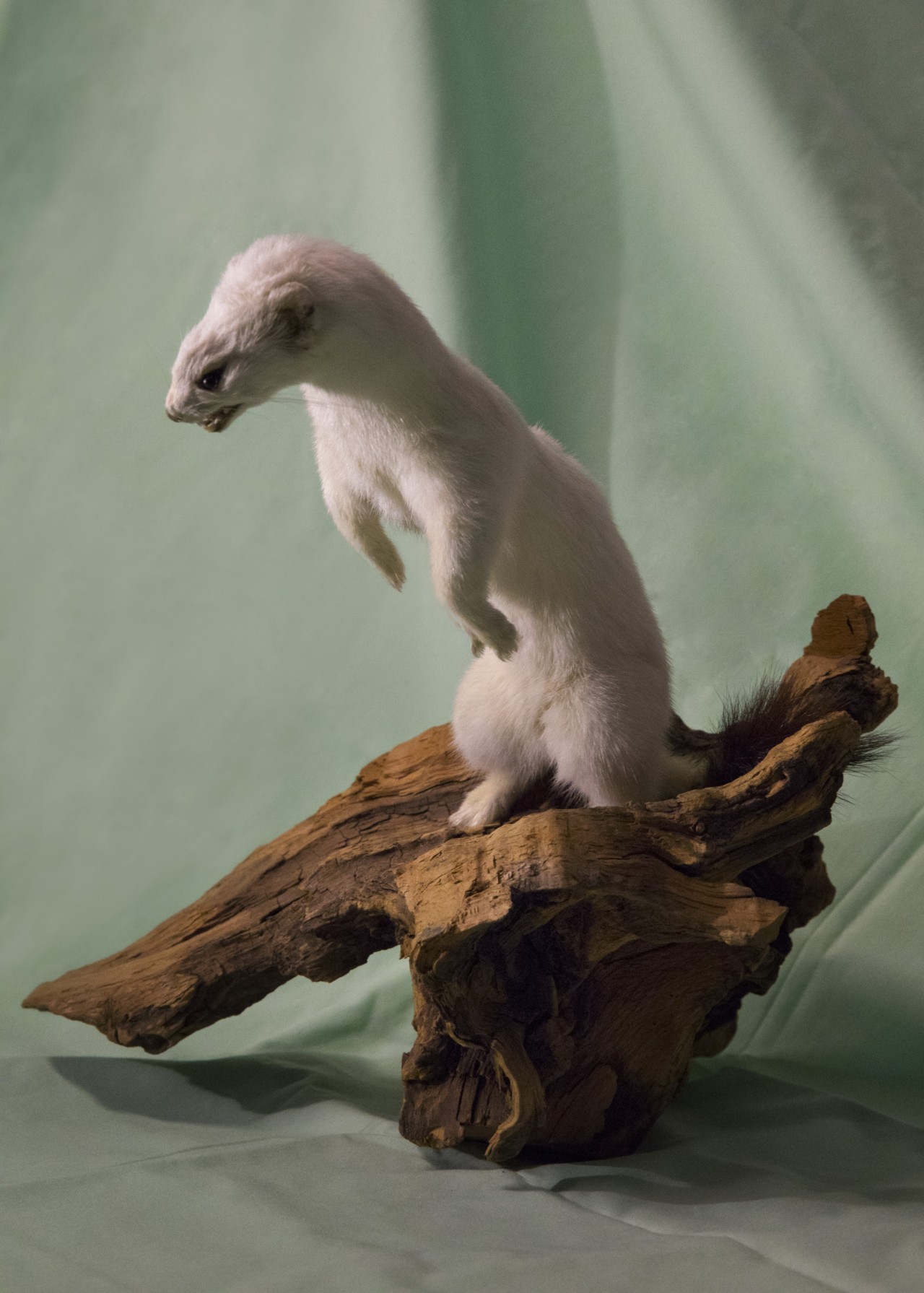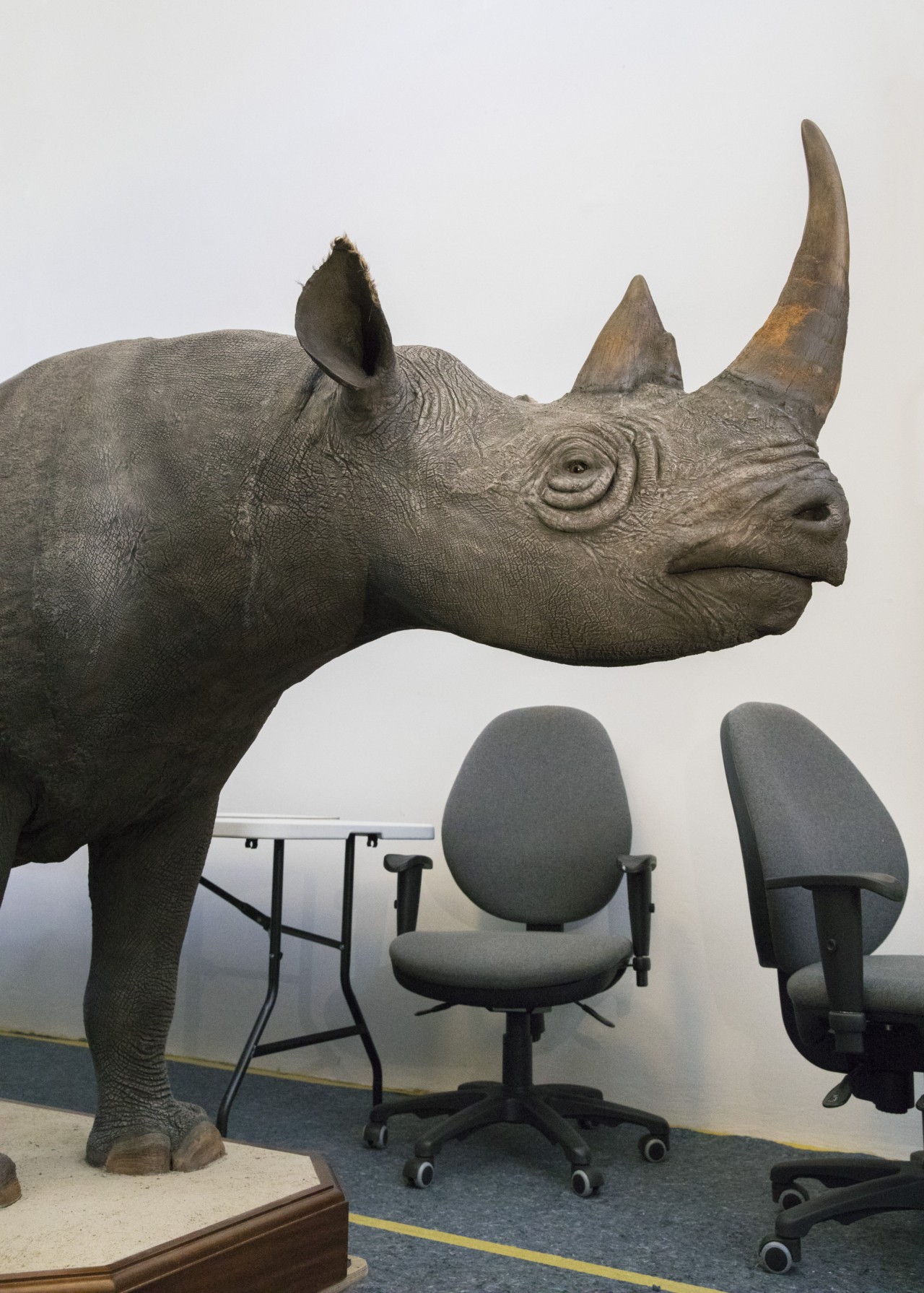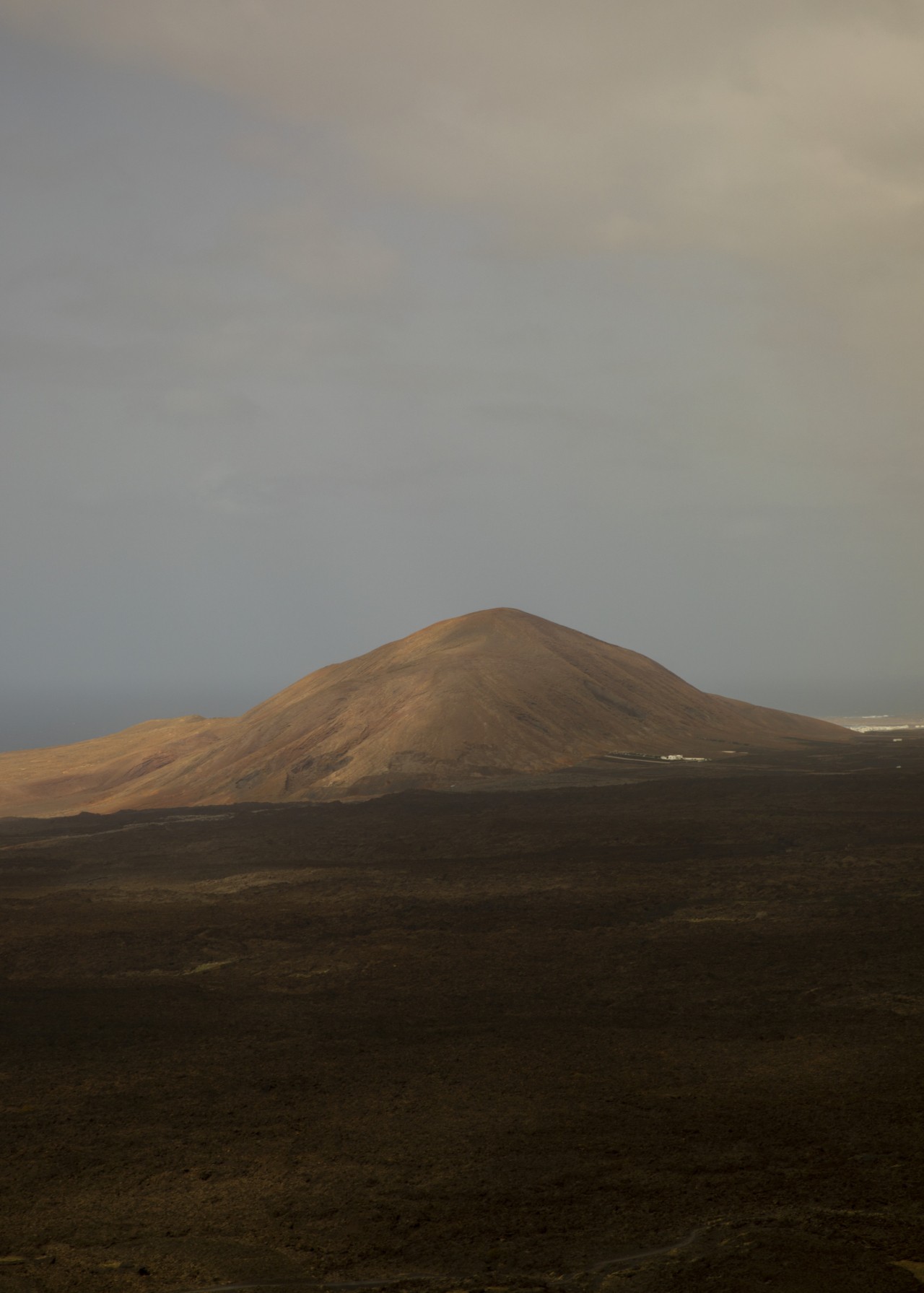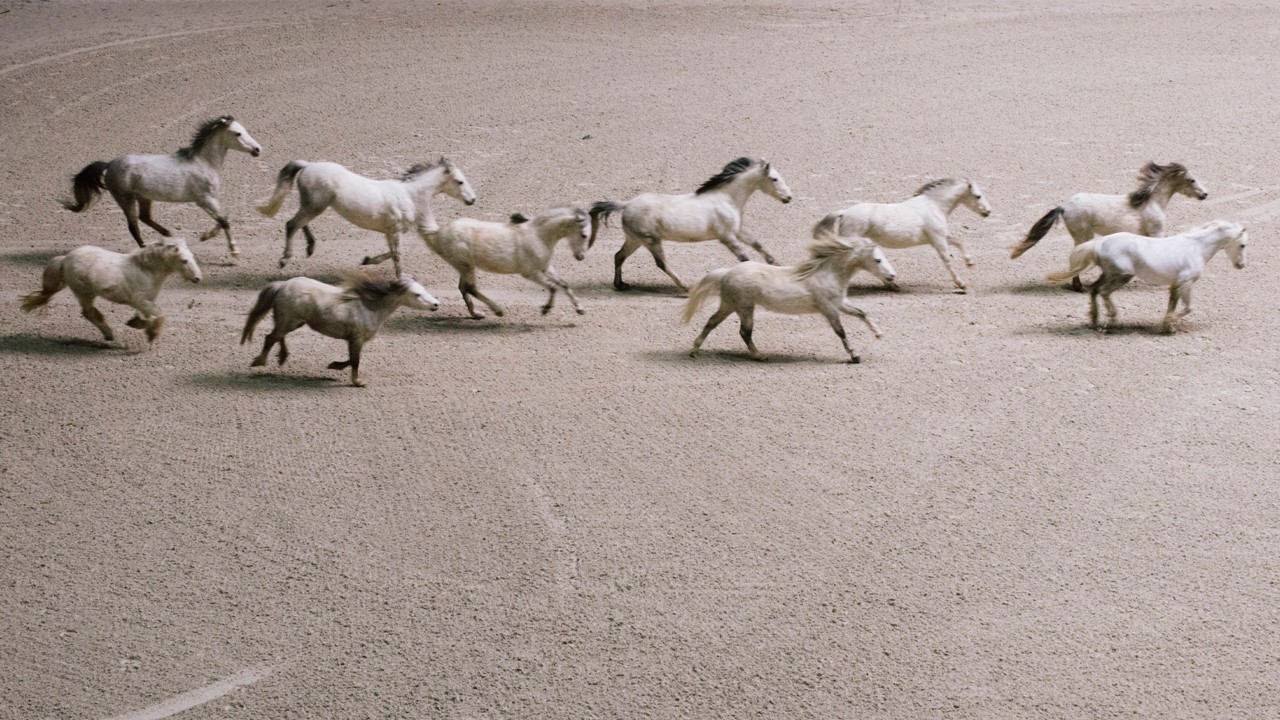
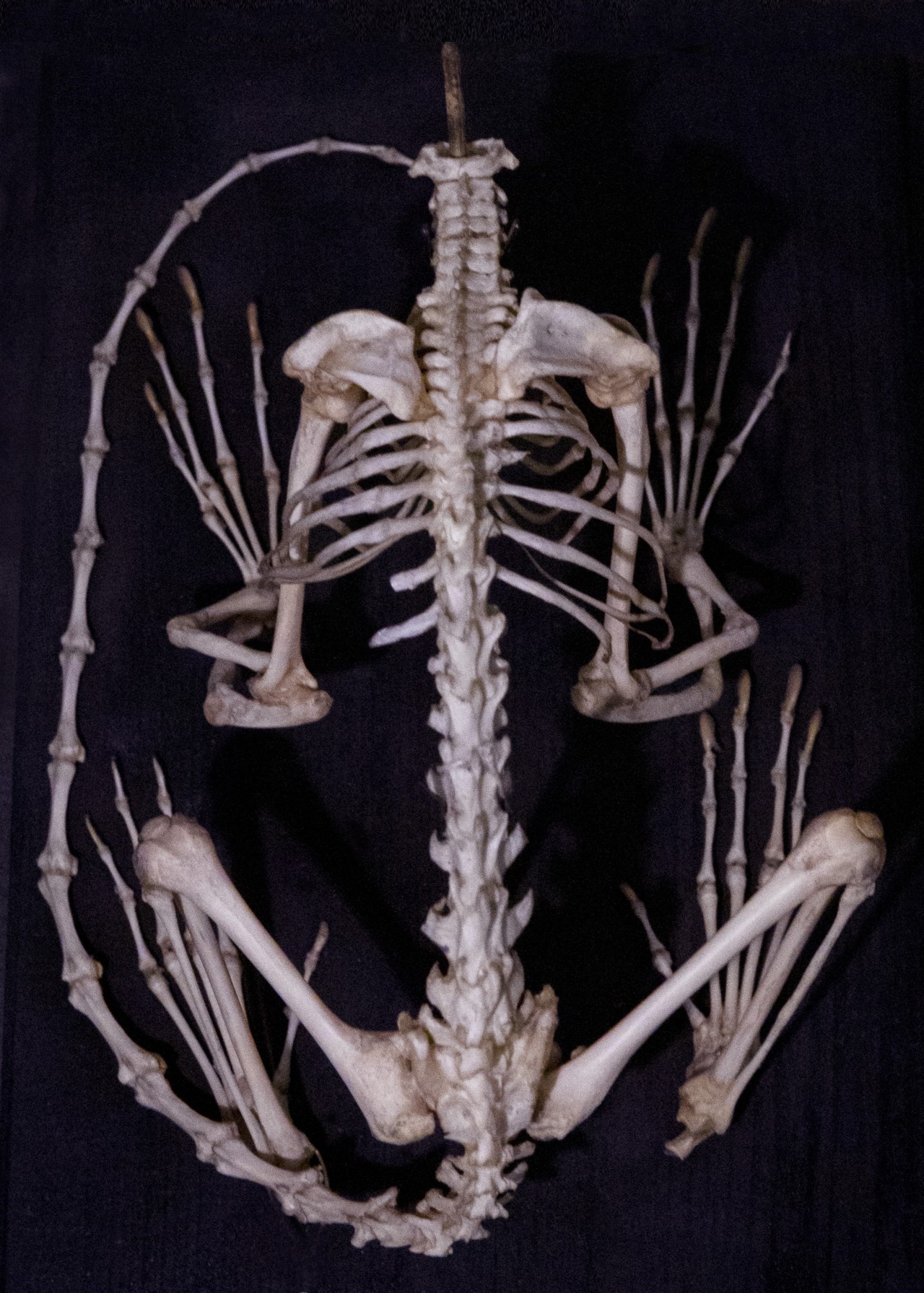
These images of landscapes and living creatures in Slovenia, Brazil, France, Haiti, and the Canary Islands are juxtaposed with portraits of long-dead animals taken at the National History Museum in Vienna, Austria.
Words by Jason P. Dinh
Photographs by Stefanie Moshammer
Ben Novak couldn’t believe it when the first black-footed ferret clone was born in 2020. Named Elizabeth Ann, the ferret was created from frozen skin cells gathered in the 1980s. Efforts to use the DNA from those cells to create a clone began in 2013, but nobody expected a successful birth that quickly: It was one of the first times scientists had cloned an endangered species.
The process was bumpy. Elizabeth Ann’s surrogate mother—a domestic ferret—was carrying two fetuses, but one was stillborn. Another two domestic ferrets implanted with black-footed ferret embryos didn’t carry their pregnancies to term. Elizabeth Ann’s delivery required anesthesia and an emergency C-section. Because of the anesthesia, Elizabeth Ann needed to be resuscitated shortly after she was born. Her birth “was somewhat of a miracle,” said Novak, lead scientist at Revive & Restore, a wildlife conservation nonprofit that funded and led the cloning effort.
Elizabeth Ann was cloned to infuse genetic diversity back into her species. Black-footed ferrets were presumed extinct multiple times in the past century. In the 1980s, only 18 remained, and they were all captured and placed in captive breeding programs. Since then, thousands of black-footed ferrets have been reintroduced to eight states plus Mexico and Canada. Now, an estimated 300 to 500 live in the wild.
But there’s a problem. It’s estimated that all black-footed ferrets today can trace their ancestry back to just seven of those final 18 ferrets, and inbreeding threatens the species’s long-term future. That’s where Elizabeth Ann comes in.


Elizabeth Ann’s forebear, whose skin cells were frozen nearly four decades ago, has no living descendants. If conservationists can breed her back into the population, they could potentially increase the species’s genetic diversity by up to 14%, according to the U.S. Fish and Wildlife Service (FWS). “It’s kind of a big deal,” said Seth Willey, deputy assistant regional director of ecological services for FWS’s Southwest Region.
FWS, Revive & Restore, and their collaborators tried to breed Elizabeth Ann in 2021. At first, she spurned several suitors. She even bit one in the face. Then, when veterinarians attempted to artificially inseminate her, they discovered that she had a condition called hydrometra, where one of her uterine horns filled with fluid, preventing her from reproducing. She has since had her uterus removed, but her successful rearing encouraged the team to try again. Last April, FWS announced the birth of two more clones, Noreen and Antonia, whom they hope can finish the job Elizabeth Ann started.
“I am not at liberty currently to say what their status is…but they’re phenomenal, and they’re looking great,” Novak said.
The cloning of black-footed ferrets marked a watershed moment in conservation. It opened the door for biotechnology to enter the mainstream, proving the utility of freezing and preserving endangered animal cells. “Elizabeth Ann will always be an incredible ambassador of biotechnology for conservation,” Novak said. And now, she has inspired FWS to scale up their biobanking efforts.

“Biobanking is one such tool that allows us to preserve some of the biodiversity that exists today and ensure it isn’t lost forever.”
In a new initiative launched last October, FWS, Revive & Restore, and the other collaborators behind the black-footed ferret cloning efforts began cryopreserving and biobanking all 66 endangered mammals in the U.S. Eventually, Willey, who helped kickstart and spearhead both the black-footed ferret project and this new initiative, hopes that biobanking will be woven into every species recovery plan. Those samples could be used for cloning and genetic rescue, and in the future, some hope they could be used to bring species back from extinction—an idea evoking Jurassic Park, which has received generous funding despite countless ethical objections.
How the biobank gets used could foreshadow how conservation biotechnology fits into our world for centuries to come.
“This is an attempt for us to face twenty-first-century conservation challenges with twenty-first-century conservation tools,” Willey said. “Biobanking is one such tool that allows us to preserve some of the biodiversity that exists today and ensure it isn’t lost forever.”
The pilot for the new biobanking initiative is something like Noah’s Ark. Launched in October 2023, the team is starting by preserving cell lines from 26 endangered species—one male and one female of each. As of June 2024, they’ve reached that goal for 13 species, including several rodents, a bat species, and the Catalina Island fox.
Taking a biopsy from an endangered species is risky. In one species, the Florida salt marsh vole, sampling has stressed the animals so much that they’ve been pulled from the pilot. In other species, scientists have elected to wait for a natural death before retrieving samples to avoid stress from capturing and handling. For example, they biopsied a Mount Graham red squirrel from fresh roadkill the day the individual died—an impressive feat considering only about 144 of these animals remain today.


Typically, a three to six millimeter diameter ear punch is sufficient and rarely harmful, but with this initial batch, some species-specific challenges have forced the team to innovate. For tiny rodents that may be unable to endure an ear biopsy, the team snips a few millimeters from the ends of their tails, and for bats that have specialized ears that can’t be safely sampled, they punch out small sections of the wing membrane.
After samples are taken and cultured, they’re sent either to the National Animal Germplasm Program in Colorado or the San Diego Zoo’s biobank, also known as the Frozen Zoo. There, scientists store cells in liquid nitrogen freezers, which cools them to a point where all metabolic processes stop and cultures can be preserved indefinitely. Oliver Ryder, a conservation geneticist at San Diego Zoo Wildlife Alliance, has worked at the Frozen Zoo for decades. He was involved with the biobanking of the two black-footed ferret samples in the 1980s. Now, his team has cell cultures, gametes, and embryos from over 1,000 taxa.
“The Frozen Zoo has become the largest, most diverse, best characterized, and most utilized resource of its kind,” Ryder said. “I’m delighted that there’s now a more extensive initiative with the Fish and Wildlife Service to bank more cells from U.S. endangered species.”
The new project offers a chance to learn from the mistakes of the black-footed ferret samples. For example, scientists only preserved two black-footed ferret cell lines: the female Elizabeth Ann comes from and a male that they plan to clone after they treat the sample for a canine distemper viral contamination. For these newly biobanked mammals, the team hopes to preserve at least 20 genetically distinct samples per species, ensuring sufficient diversity to be valuable in the future.


In total, that depth of sampling for all 66 endangered mammals would cost $1.9 million, according to Novak. That’s much cheaper than other conservation efforts, like the Earth BioGenome Project, an effort to sequence every eukaryotic genome, which is estimated to cost $4.7 billion. With another couple million, Novak’s team could add whole-genome sequencing and other molecular conservation approaches, he said. Their pilot is currently funded by donations from the conservation group Re:wild and the Pershing Square Foundation, but they’ll need more to pay for the full project.
They’re starting with mammals because that’s where the techniques in cell culturing are most advanced, and those are the only species that their cloning and genetics collaborator, ViaGen Pets & Equine, currently works with. Eventually, they want to expand beyond mammals—an ambitious effort that is “not scientifically possible” without more research and development, according to Novak.
There are no plans to tap into the new biobank yet, Willey said. It’s more of an insurance policy “should it ever be needed.” But with a burgeoning list of endangered species, cloning already underway, biotechnology advancing at breakneck speed, and talks of de-extinction ramping up to a fever pitch, the possibilities are endless—for better or for worse.
Novak leads Revive & Restore’s de-extinction projects—attempts to resurrect species that have died out. The nonprofit co-led efforts to bring back woolly mammoths until 2021, after which the for-profit company Colossal Biosciences took over. But Novak describes his “primary passion” as de-extincting the passenger pigeon. That could happen between 2029 and 2032, he said.


That project doesn’t use biobanking; it attempts to use CRISPR/Cas9 gene editing to turn the passenger pigeon’s closest living relative, band-tailed pigeons, into a facsimile of the extinct species. But scientists, including those involved with the new FWS initiative, clearly see the links between biobanking and de-extinction. In fact, the same cloning technique used to create Elizabeth Ann from a biobanked cell line could one day be used to clone an extinct species.
In 2022, Ryder coauthored a study recognizing that cryopreserved cell cultures could “potentially reverse species extinctions.” In a 2023 report, Revive & Restore wrote that biobanks and modern-day genomics will allow them to “explore de-extinction possibilities.” Indeed, an extinct animal has already been cloned, to questionable success, from cryopreserved samples in 2003: a goat called the Pyrenean ibex, or bucardo, which died from lung defects just minutes after birth.
Willey said that cloning species from the endangered species biobank after they go extinct isn’t part of the plan now, nor is it something he necessarily anticipates. “The Service has no plans to engage in de-extinction at this point. Beyond that, it’s a complicated scenario,” he said. Still, the possibility is in play. Given the litany of objections, perhaps it is prudent to start considering the ethics before the momentum becomes insurmountable.

For starters, there are animal welfare concerns. The success rates of cloned live births range from 5% to 12%, and those that do survive often die prematurely or suffer from disease: the bucardo, Elizabeth Ann’s stillborn twin, or even Dolly, the famous cloned sheep that suffered from arthritis and lung disease and died at six, half her species’s normal lifespan. That’s not to mention the conditions to which surrogate mothers or clones might be subjected. These concerns led one researcher to conclude that “none of the proposed benefits of de-extinction programs appear sufficient to outweigh the cost in terms of animal welfare.”
Other critics say de-extinction is not an effective use of conservation money. Colossal Biosciences raised $225 million between 2022 and 2024, for example—nearly equal to the entire 2023 revenue of the Environmental Defense Fund. If the goal is to save the most biodiversity possible with every dollar, then most of the time, bringing back long-lost species does little toward that effort.
And then there’s the hubris of it all—the “playing God” argument. “Attempting to revive lost species is in many ways a refusal to accept our moral and technological limits in nature,” environmental ethicist Ben Minteer wrote in 2014. He described it as a twenty-first-century “Promethean spirit,” using human cleverness to enhance conservation. “But things did not end very well for Prometheus,” he concluded.
Before greenlighting any de-extinction projects—once endangered species in the biobank do go extinct—Ronald Sandler, an ethicist at Northeastern University, said these risks must be weighed against the conservation benefits. De-extinction is itself not a conservation success, he added, without addressing the threats that endangered the species in the first place: poaching, habitat loss, and climate change, for instance. “I don’t think it’s an all or nothing,” Sandler said. “It’s taking those issues seriously.”


Even if a de-extinction project meets ethical goalposts, it must also have public support, said Christopher Preston, an environmental philosopher at the University of Montana. Notably, Novak said Revive & Restore hasn’t engaged the public about passenger pigeon de-extinction yet, despite it being potentially less than a decade away. “It’s a basic fundamental principle of democracy that we want people to have a say in the world that they’re going to live in,” Preston said.
Public opinion is paramount for the new endangered species biobank because it is supported by federal funding. Those samples were collected by FWS staff, relied on government infrastructure, and were therefore made possible by taxpayer dollars. Willey explained that FWS owns these samples, and the Service will guide conversations about how they’re used. “A basic ethical principle here is that if it’s your money, you need to have a say in it,” Preston added.
The Earth we leave behind won’t be built entirely on biotechnology, nor will it be devoid of it.
Preston fears that de-extinction practitioners are manipulating public opinion. He points to Colossal Biosciences, which dubiously positions woolly mammoths as a climate change solution. But if we rely too heavily on de-extincted mammoths to cool the planet, by the time there are enough of them lumbering around to have any quantifiable impact on the climate, “we’d all be toast,” he said.
More fundamentally, he worries that de-extinction advocates are misleading the public about what they’re creating in the first place. “It needs to be made very clear that a de-extincted animal—it is not de-extincted at all,” he said. It’s an ersatz replica. The clones would have different mitochondrial DNA, microbiomes, social structures, and physical environments. That’s at least four grounds to argue that it’s really not the same animal. Pop culture doesn’t help people dispel this misconception: Jurassic Park portrays images of once-extinct species living in lush paleoenvironments, not cheap imitations forced to spend all their lives in fenced-in enclosures.


“There’s a vision of what’s possible, and there’s a reality of what happens. I think the gap between those two gets lost a lot in this debate,” Preston said.
Preston isn’t against using the new biobank for conservation biotechnology altogether. De-extinction makes him uncomfortable, but he supports cloning for black-footed ferret genetic rescue, for example. Ethics are complicated like that, and the applications of the endangered species biobank will be, too.
Equally complicated will be the natural-synthetic world that such a biobank will help us build. The Earth we leave behind won’t be built entirely on biotechnology, nor will it be devoid of it. “The future’s going to be a lot more messy,” Preston said, but the composition of that world shouldn’t be decided unilaterally by the genetic engineering labs in Cambridge or Palo Alto.
He imagined a future where a walk in the woods became impossible without seeing a de-extincted species or genetically modified one. Picture a passenger pigeon flying out of a chestnut tree while a woolly mammoth looms around the bend. The technology to engineer such a future is coming quickly, as is the money and willpower of biotechnology companies.
Perhaps no individual has all the answers on whether or when that world should be built, but as a society, we could land on a reasonable and responsible path forward. The public should decide whether major changes to their world are forced upon them; indeed, this is the very basis of some of our strongest environmental legislation. Maybe in this case, the cliché is wrong: When the decisions of a few can so dramatically reshape the lives of so many, maybe it’s better to ask permission than it is to beg forgiveness.


Photography assistant Malou Barck Special thanks Natural History Museum Vienna
This story first appeared in Atmos Volume 10: Afterlife with the headline, “A New Genetic Life Support.”
A New Genetic Life Support
